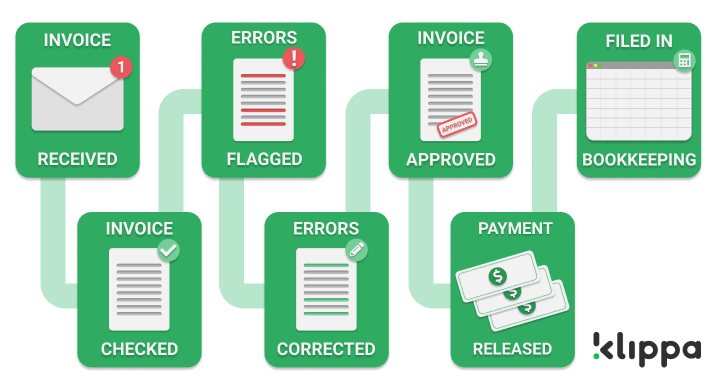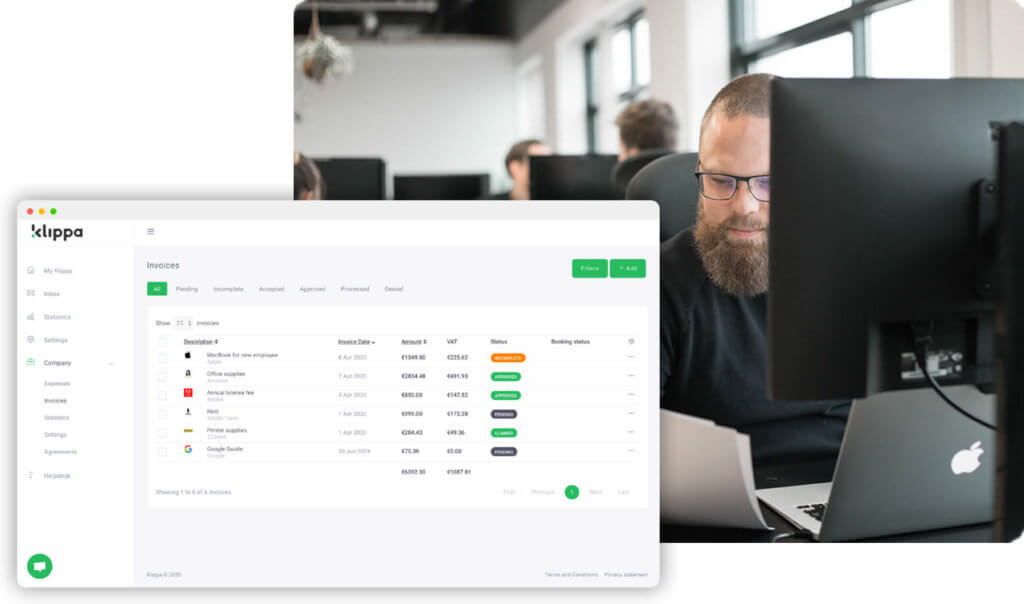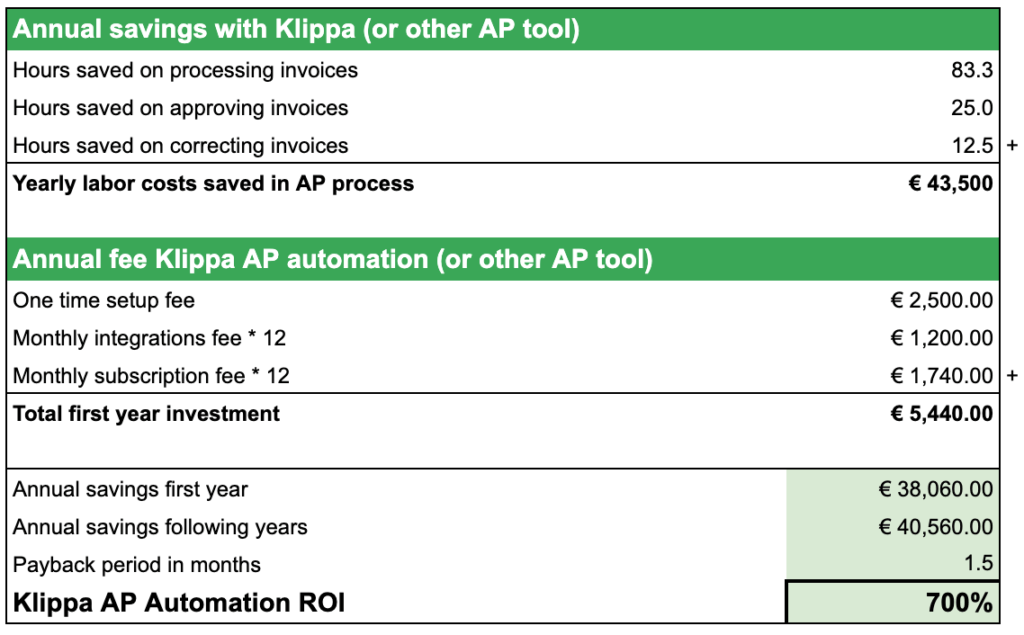According to the Institute of Finance and Management (IOFM), an eye-popping 84% of Accounts Payable (AP) workers are optimistic about the progress their department will make over the next three years in eliminating paper invoice and payment processes.
Does this come as a surprise? Well, it shouldn’t. The hype around AP automation might not be as high as for marketing or sales automation, but its impact is just as significant. An automated AP process creates value by streamlining inefficient AP processes and provides you with more control over your supplier invoices and payments.
But how can you prove the value of AP automation to the key decision makers in your company? You might also be the key decision maker yourself, trying to understand the ROI of investing in AP automation. This blog will answer all your questions and *spoiler alert* even includes a free ROI calculator. Just sit tight and enjoy the ride!
What is accounts payable?
Let us start by explaining the concept of accounts payable, so that we all start on the same page. Accounts payable can be defined as “an account within the general ledger that represents a company’s obligation to pay off a short-term debt to its creditors or suppliers”.
So basically, it’s all the money that you still have to pay to your suppliers.


Typically, a supplier provides you with a product, let’s say a super cool order-picking robot, and sends an invoice to your company for the payment. That invoice results in an account payable in your company’s bookkeeping system. The exact details of this process may vary depending on the nature of the order, the industry or individual company protocols.
Another common usage of “AP” refers to the business department or division that is responsible for making payments owed by the company to suppliers and other creditors.
You might have heard about accounts receivable as well, which is basically the equivalent process but then for the supplier. When you pay your supplier, you add an entry in your accounts payable and the supplier adds a similar entry in their accounts receivable.
All clear so far? Let’s continue with the tasks associated with AP!
What tasks are associated with accounts payable?
Simply said, the AP workflow is the process of approving invoices before payment is processed. A typical workflow starts with receiving the invoice from the supplier. This invoice needs to be organized, checked for irregularities, corrected, approved by an authorizer, processed, paid and added to your company’s books.
This process may seem simple, but it can be a very time-consuming one. To prove our point, we discuss a few AP tasks in more detail below:
- Organizing
When you have a manual AP process, you need to open envelopes, emails, electronic invoices and other means of communication to capture invoices. All these documents need to be printed, sorted, stacked together and organized before they can be forwarded to the next step in the process. Many companies allocate a substantial part of their Finance team’s resources to make sure that they organize invoices correctly, which is a bit of a waste of time, to be honest. But more on that later. - Validating and error checking
Next, you have to check every invoice to make sure there are no discrepancies between the invoice and the original purchase documents. Irregularities can include pricing discrepancies or missing information, such as an order confirmation number. Often, invoices have to be cross-checked with outstanding purchase orders (POs) as well, which are used to pre-authorize purchases in many companies. This process is very similar to matching purchases with bank statements (i.e. reconciliation) and is a very tedious task.
In case of any irregularities, the invoice is sent back to the relevant person or supplier to correct it, after which it is sent through the approval workflow again. - Forwarding for approval
When you have another authorization layer in your AP process, you have to send your nicely organized and checked invoices to the approver along with the earlier-mentioned relevant details. In case the invoice is sent back to you with the need for more information, another task is added to the process and you have to gather this information first. - Following up
You might think you’re done with the invoice after forwarding it to the approver and no further questions arise, but you’re not. In many cases, you will need to follow up with them to make sure they approve the invoice on time. If they fail to do so, payment may be delayed, which in turn may lead to delayed product deliveries or late payment penalties, which would add unnecessary costs to the process. - Making the payment and filing
In the final step of the process, all approvals are in place, the payment can be made and the invoice needs to be filed and stored, usually in your company’s bookkeeping or Enterprise Resource Planning (ERP) system. This step not only takes time, but is also essential for audit purposes.


What are the downsides of not automating your accounts payable process?
In a research carried out by PayStream Advisors, who surveyed over 400 back-office employees across several industries and market segments, organizations’ top pains in their AP process include manual invoice routing for approval, manual data entry and high volumes of paper invoices. These issues and many others, such as lost invoices and a high number of invoice discrepancies and exceptions, are all common symptoms of a manual AP process.
Below are some of the drawbacks associated with manual invoice processing techniques.
- It’s costly
Unfortunately, there isn’t an exact number for invoice processing costs. Research firms, like the Everest Group, have found that the average cost of manually processing a single invoice can range from $12 to $30. Other firms have been able to narrow this gap to between $13 and $15. Companies with a more complex AP process can expect costs to peak at nearly $40 per invoice. Just imagine what this means for a $10 invoice (or the equivalent in euros); the costs of processing it easily transcend the actual invoice amount. Multiply this number with hundreds or thousands of invoices per month and you know it’s a costly operation for your business. - It’s slow and time-consuming
With a manual AP process, it may take days or even weeks to approve and pay an invoice. Such a slow approval process can lead to delays in invoice payments, which can, in turn, result in late payment penalties, poor payment terms and, in some instances, quality suppliers refusing to work with your company. - It’s prone to human error
As the age-old truth says, “Mistakes make us human”. When processes are carried out by humans, mistakes are inevitable. The problem with errors in AP is that a small mistake can lead to bigger issues, such as costly delays and extra, unnecessary time spent on reconciliation. - It makes you lose money
As we’ve outlined, AP errors can be costly and hurt your company’s bottom line. It can lead to mismanaged taxes, duplicate payments and overpayments. Issues of late payment penalties, fraud, missed discounts and forgotten credit notes are also very common with manual AP processing. Whenever this happens, money leaks from your process, which can be very tricky to detect within existing operations. In companies with large volumes of transactions, this can add up to significant amounts each year. - It’s boring
Nobody wants to sit at the same old desk and enter mind-numbing data for hours, right? But unfortunately, that’s what manual invoice processing is about. It consists of tedious and repetitive tasks that, most likely, lead to a bored and inefficient team.
Luckily, there is a solution to these problems that correlates with some of the best practices in accounts payable: AP automation!


What is accounts payable automation?
As the name suggests, AP automation refers to technology that is used to streamline and automate AP processes, removing manual tasks and providing more visibility and control over important financial data.
Usually this involves dedicated software that lets you submit and approve invoices digitally, rather than dropping them physically in organizers. Some solutions read invoices with OCR and AI and extract information themselves, which means no data entry for anyone on your team. To get a full grasp of the possibilities, we will briefly discuss a business example.
When you go all-in on AP automation, the process generally starts with capturing data from invoices in a digital format. This usually happens through a form of scanning or capturing methods, such as Klippa’s Optical Character Recognition (OCR) solution.
The invoice processing software will then manage the coding and routing of the invoice through the digital workflow, which functions based on specific logic configured by the organization itself. In other words, you can tell the software who needs to check and approve the invoice in each authorization layer.
The entire process can be integrated with your company’s ERP or bookkeeping system, seamlessly transferring data between the systems without straining the ERP environment or business IT resources. Doesn’t that sound good to you?


What are the benefits of accounts payable automation?
You might be starting to see the need for automating your AP and invoice approval process by now. The last remaining question is whether you can expect a return on your investment. In order to answer this question, we will kick off with the “return” part of the ROI, followed by the costs of implementing and using a tool, and we will end with a free ROI calculator.
So, what can you get out of this automated processing technology?
- It decreases time spent by 70%
On average, adopting AP automation in an AP department can reduce time spent on a manual AP process by as much as 70%, leaving staff with much more time to deal with other responsibilities. The logic behind it is quite simple: technologies like OCR digitize the information on invoices almost instantly. What was previously a slow and repetitive data entry process, is now done within seconds. - It shortens turnaround times from days to minutes
According to research from The Aberdeen Group, it may take companies with minimal automation 16.3 days to process an invoice. With a solid AP automation solution, the amount of time between receiving an invoice and making the payment can become much shorter, thereby decreasing turnaround times and improving relationships with suppliers. You will also have more real-time insights in your financial situation and avoid late payment penalties due to payment delays. - It leads to 97% less errors
As you know, we all make mistakes, especially in repetitive, manual tasks. Computer programs, on the other hand, repeat them endlessly without errors. By automating the AP process, you can validate invoice data early in the process, eliminate manual human errors, flag duplicate invoices and facilitate better collaboration between suppliers. In the few cases the system doesn’t recognize a data point on the invoice, for example due to a different layout or a low-quality picture, a quick human check will do the trick. - It makes AP accessible from anywhere
Paper processes require someone to be physically present at the right place. Invoices have to be placed in the right organizer and filed in the right cabinet. Digital processes, however, can be done from anywhere in the world with an internet connection (assuming they are cloud-based). With the ideal solution, managers simply receive a notification on their smartphone when there is a new invoice to approve, authorize it with a press of a button and off you go! - It leads to cost savings of 70+%
We saved the best reason for last. We can safely say that AP automation will save you a lot of money. Automation namely eliminates the manual processes that drive up the costs of AP processing, including additional staff as the volume of invoices to process goes up, entering invoice data, filing invoices, and all the other things we have covered in this blog so far.
Research firms found that manually processed invoices cost, on average, $12 to $30 per invoice to process, while fully automated invoices average only $3.50 per invoice to process.
Next to that, think about the costs of shipping invoices to a central location for processing. Or the costs of storing boxes, cabinets and other archiving tools full of paper invoices and documents. Those are real tangible costs that are eliminated with AP automation software.
And do suppliers offer you discounts on the invoice amount in exchange for early payments? Eighty percent of the businesses surveyed for IOFM’s AP Benchmarking report answered “yes” to this question. With an automated system and the ability for approvers to access payment statuses from anywhere at any time, invoices move efficiently through the AP process. It enables you to capture most, if not all, of the early-payment discounts offered to you and reduce late payment penalties to a minimum.
These are just a few examples of the benefits AP automation can bring to your organization. We are sure that once you get started, you’ll find many more yourself!


What are the costs of accounts payable automation?
In most cases, automation just makes everyone’s life easier. But it’s still an investment, so let’s have a look at the costs side of the equation.
Automated AP processing comes with a variety of investments, including the following:
- AP automation software licenses
AP automation providers generally use a Software-as-a-Service (SaaS) pricing plan. They offer you a cost per license per user or a monthly subscription fee based on the level of features and maximum number of documents and users. You can make it as expensive (or as inexpensive) as you like, but normally the price per user ranges from €4 to €25, sometimes combined with a price per invoice ranging from €0.10 to €0.50. - Setup and implementation
How easy an automation solution is to implement and configure is an important factor to consider. Will your automation software require a lot of IT time to set up or is it pretty straightforward? Ideally, you choose a low-code workflow automation option with easy-to-use wizards and rules so that anyone can use it. It’s also quite common for software providers to charge implementation and onboarding packages at sign-up, which may include setting up data connections, training sessions and dashboard setups. This really depends on the type of solution that you choose: prices range from SaaS out of the box solutions, with usually low setup fees not larger than a few thousand euros, to customized enterprise solutions that can go from tens of thousands to millions of euros. - System and process changes
While automating your AP process, changes in the systems you use and the methods you apply will follow. Your employees have to get used to the new way of working. It would help if you quantified the changes and factored in the costs and time involved in the change management process. - Additional hardware
Most software providers have mobile apps available so that you can scan documents with just your smartphone. Easy as that! In such a case, you don’t have to invest in additional scanning equipment. However, don’t forget to factor in the costs of hardware scanners if you believe you need them.


How to calculate the ROI on your accounts payable automation investment?
Now we have discussed the benefits and costs of automating your AP process, let’s calculate the return on your investment.
For the sake of clarity, we only include the tangible results of AP automation, including savings on labor costs and minimizing invoice errors. These benefits translate directly to your company’s bottom line. Other results like early payment discounts and savings on storage costs, which can vary a lot case by case, are not taken into account.
In the process of calculating the ROI of an AP automation tool, we consider the following parameters*:
- The average number of invoices from your suppliers per month
Let’s say your company manually processes 500 invoices per month. Seems like a fair amount, right? - The average time spent on processing one invoice
The industry average AP practitioner processes 5 manual invoices per hour (i.e. 12 minutes per invoice). This includes data entry, proofing the manual entry and processing the invoice.
The average AP automation tool enables that same practitioner to process invoices six times faster, which translates into an average of 30 invoices per hour (i.e. 2 minutes per invoice). - The average time spent on approving one invoice
In addition to processing an invoice, an approver must check and approve it. Let’s assume the average approver, often a manager, approves 10 manual invoices an hour (i.e. 6 minutes per invoice).
With an AP automation tool, this can be done electronically and the approver should be able to work twice as fast, translating into an average of 20 approvals per hour (i.e. 3 minutes per invoice). - The percentage of invoices with errors
As discussed, mistakes happen, whether you like it or not. We suppose that 10% of the invoices contain errors, either right from the start made by the supplier or after faulty processing by employees. - The average time spent on correcting one invoice
Spotting the error, sending the invoice back, asking for more information and correcting the invoice can be a time-consuming process. We assume that an employee corrects 3 manual invoices an hour (i.e. 20 minutes per invoice).
An automated solution doesn’t add errors to the process, so the only faulty invoices that remain are the ones coming directly from the supplier. Your employee only has to take some time to send the faulty invoices back to the supplier, optionally with a few comments. Five minutes per invoice should suffice. - The average hourly salary
Industry averages say that an AP practitioner’s all-in cost to a company (salary plus benefits) is about €30 per hour. We don’t take into account the – assumed – higher salary of the approver. - Setup and integrations fee
Let’s suppose the software provider is in a generous mood and charges you “only” €2500 for the initial setup. You also want the AP automation tool to be integrated with your ERP system. This costs you €100 per month extra. - Monthly subscription fee
With 500 invoices per month, i.e. 6000 invoices per year, and up to 10 users you end up in the software provider’s premium tier. You pay €0.19 per invoice and €5 per user. This costs you €145 on a monthly basis.
*You can customize these parameters to your own liking.
In the situation above, you spent ~167 hours per month on processing, approving and correcting invoices. This results in a 60k payslip per year (166.7 hours x €30 x 12 months). Thanks to the benefits of automation, the number of hours spent can be reduced to ~46 hours, resulting in a labor cost saving of 43.5k per year!
Take this number and divide it by the total first year investment (€2500 setup + €145 x 12 months usage + €100 x 12 months integrations) and there it is: an ROI of 700% (i.e. factor 7) on your AP automation investment!


Do you want to see the exact calculations? Or do you want to calculate the ROI for your specific situation?
Feel free to use our free template for ROI calculation on AP automation through the following link: Download template
How to implement accounts payable automation software?
We can imagine that you are convinced of the value of AP automation software after reading this blog. You can even prove the ROI to the key decision makers in your company! But now what?
If you are looking to add automation into your AP process, you should research different AP automation solutions to ensure the best fit for your organization. It is crucial that the selected AP automation software can support every invoice processing scenario to achieve a truly automated AP process and optimal savings in time and costs.
In addition, it is important to understand how the new AP automation solution integrates with your existing ERP or bookkeeping system to ensure the synchronization of data and a streamlined process. Klippa, for example, has integrations with major players, such as SAP, NetSuite, Xero and many more.
Our experienced product specialists are more than happy to guide you through this process. They can tell you everything about what AP automation can do for your company and how you can integrate it seamlessly with existing systems and operations.
You can reach out to us directly or you can plan a free 30-minute demo below, in which we show you how our software works and how it will benefit your organization.